
UNDERPASS PARK is located below the Eastern Ave. Richmond, and Adelaide overpasses in the unfolding West Don Lands neighbourhood in downtown Toronto. The park is an important community link contributing to a safe and vibrant public realm.
Photo Credit: Right-side image: www.stockaerialphotos.com
Media: Please submit high-resolution image requests to images@asla.org.
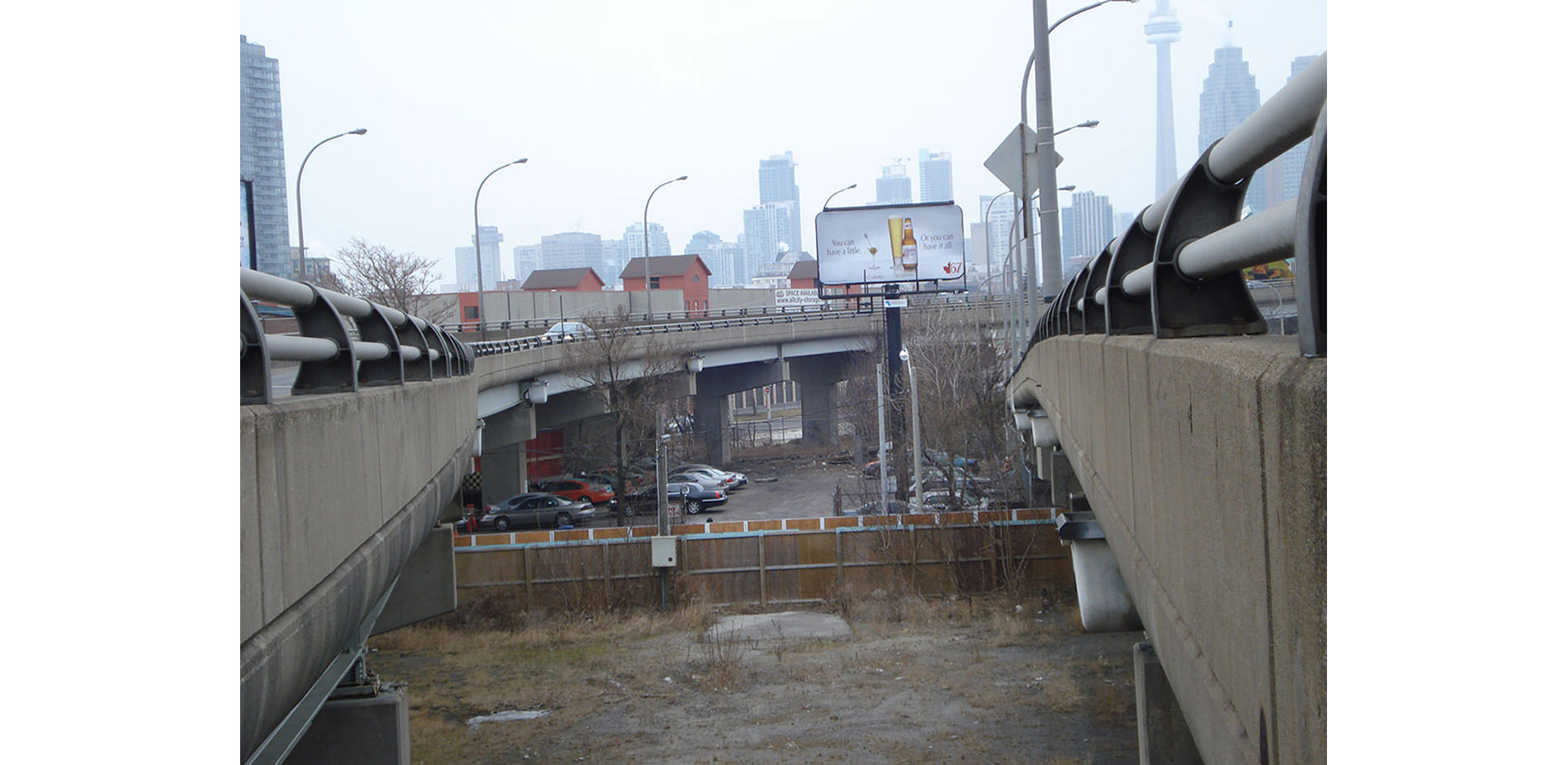
View from overpass looking west. The existing conditions found on site consisted of derelict, incidental and dangerous space, used for informal parking, illegal activities and not much else.
Photo Credit: PFS Studio
Media: Please submit high-resolution image requests to images@asla.org.

Site plan – Spatial planning and programming responded to the geometry of the overpass structures and their associated columns. Park areas covered by overpasses are now populated with recreational amenities benefiting from weather protection, leaving uncovered areas open for greenspace.
Photo Credit: PFS Studio
Media: Please submit high-resolution image requests to images@asla.org.
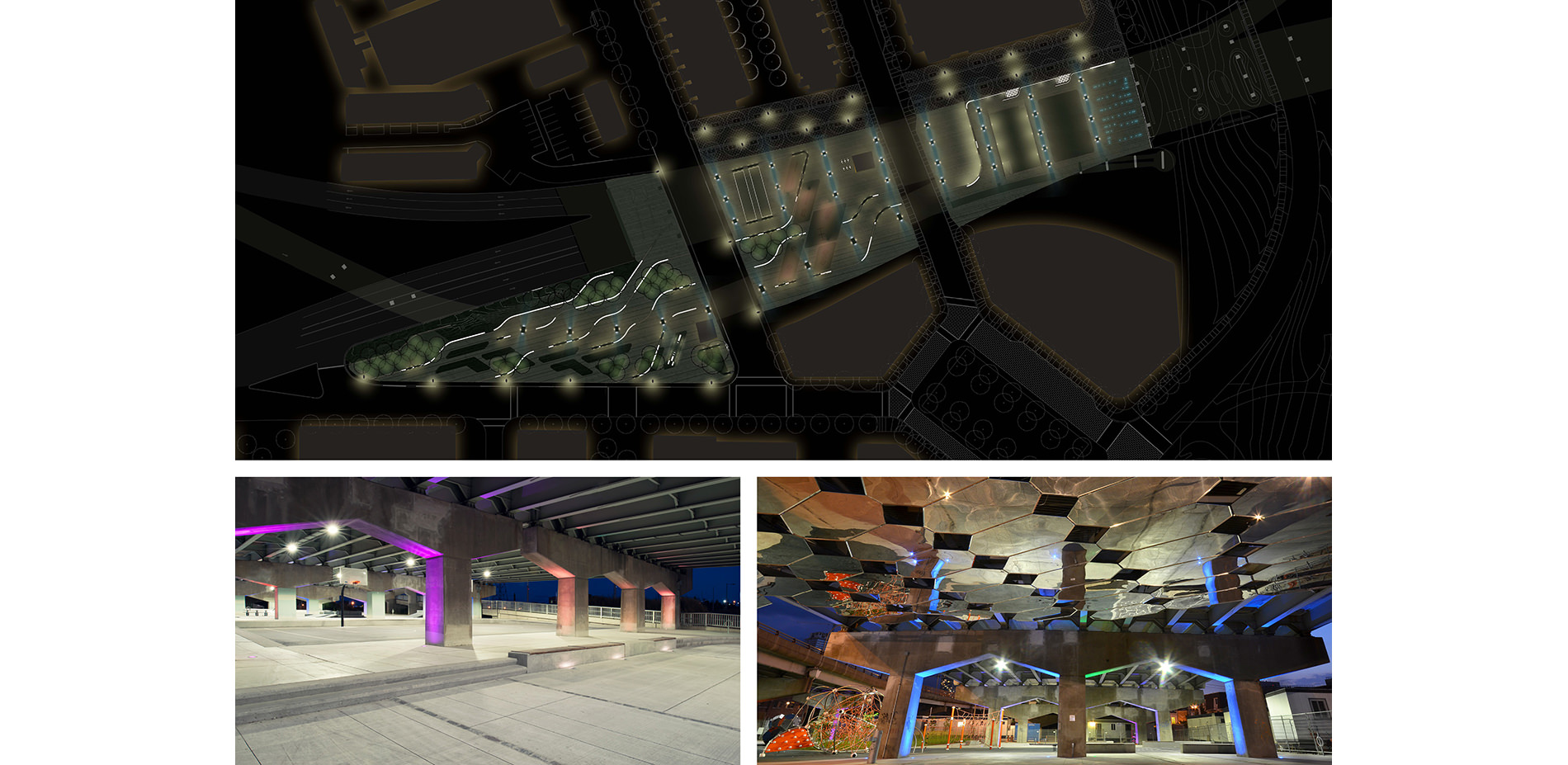
Light plays both an artistic and functional wayfinding role, providing a safe and animated experience in the part at night. Top: Illustrated lighting plan. Lower right: Uplit columns. Lower left: Lighting and reflection of art piece above.
Photo Credit: Illustrated lighting plan: PFS Studio, bottom-left image: Doublespace Photography, bottom-right image: Waterfront Toronto
Media: Please submit high-resolution image requests to images@asla.org.
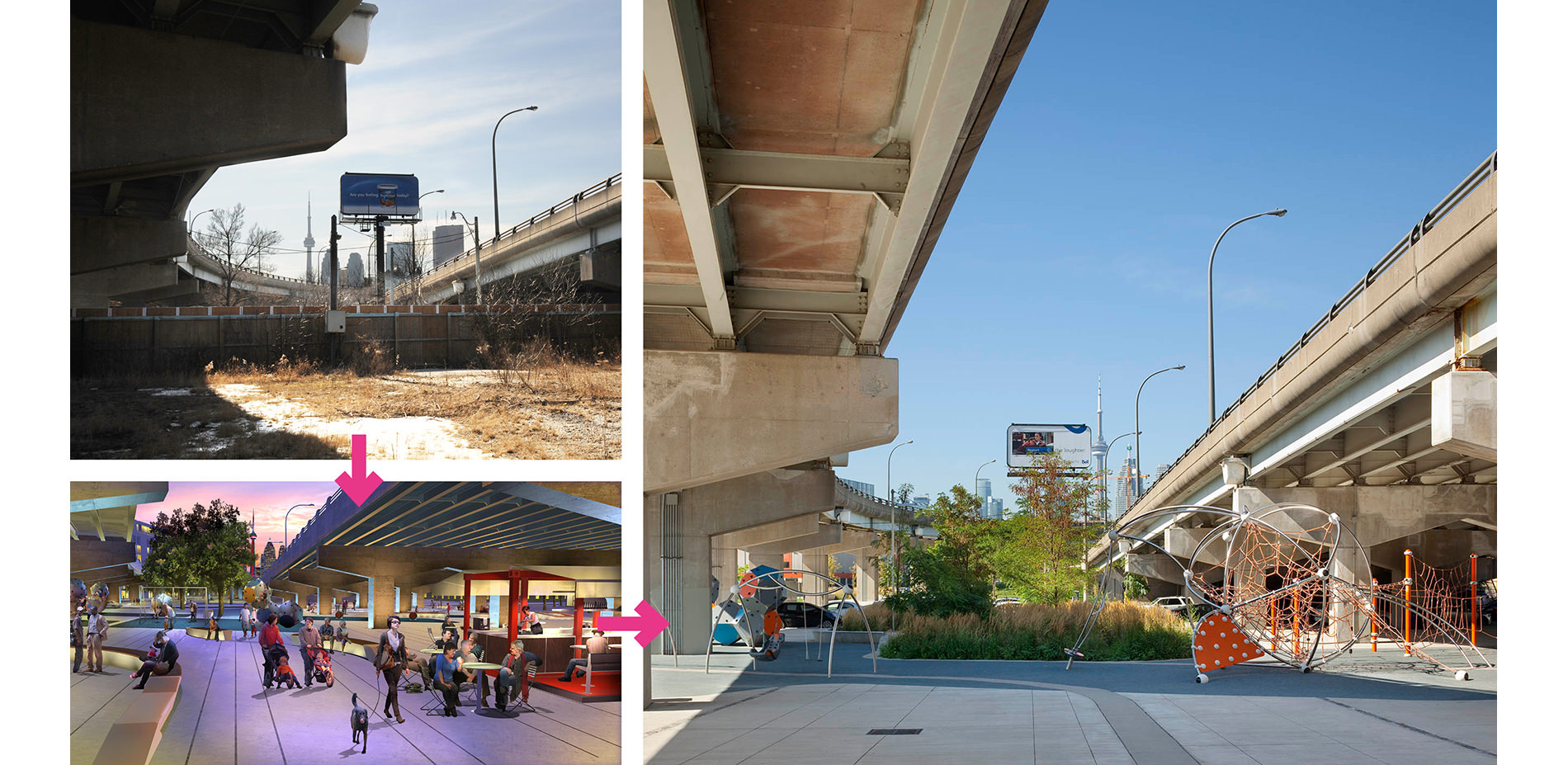
The design transforms the derelict site from a liability into a community asset, using diverse programming, color, and newly planted landscape to introduce life and vibrancy. Top left: Before, Lower left: Rendering of Block 18 concept. Lower right: Completed park.
Photo Credit: Top-left and bottom-left images: PFS Studio, right-side image: Tom Arban
Media: Please submit high-resolution image requests to images@asla.org.

Upper left: Before condition, looking west over Block 18. Upper right: Rendering of concept. Bottom: A quiet moment relaxing on a ribbon wall.
Photo Credit: Top-left: Waterfront Toronto, top-right: PFS Studio, bottom image: Tom Arban
Media: Please submit high-resolution image requests to images@asla.org.
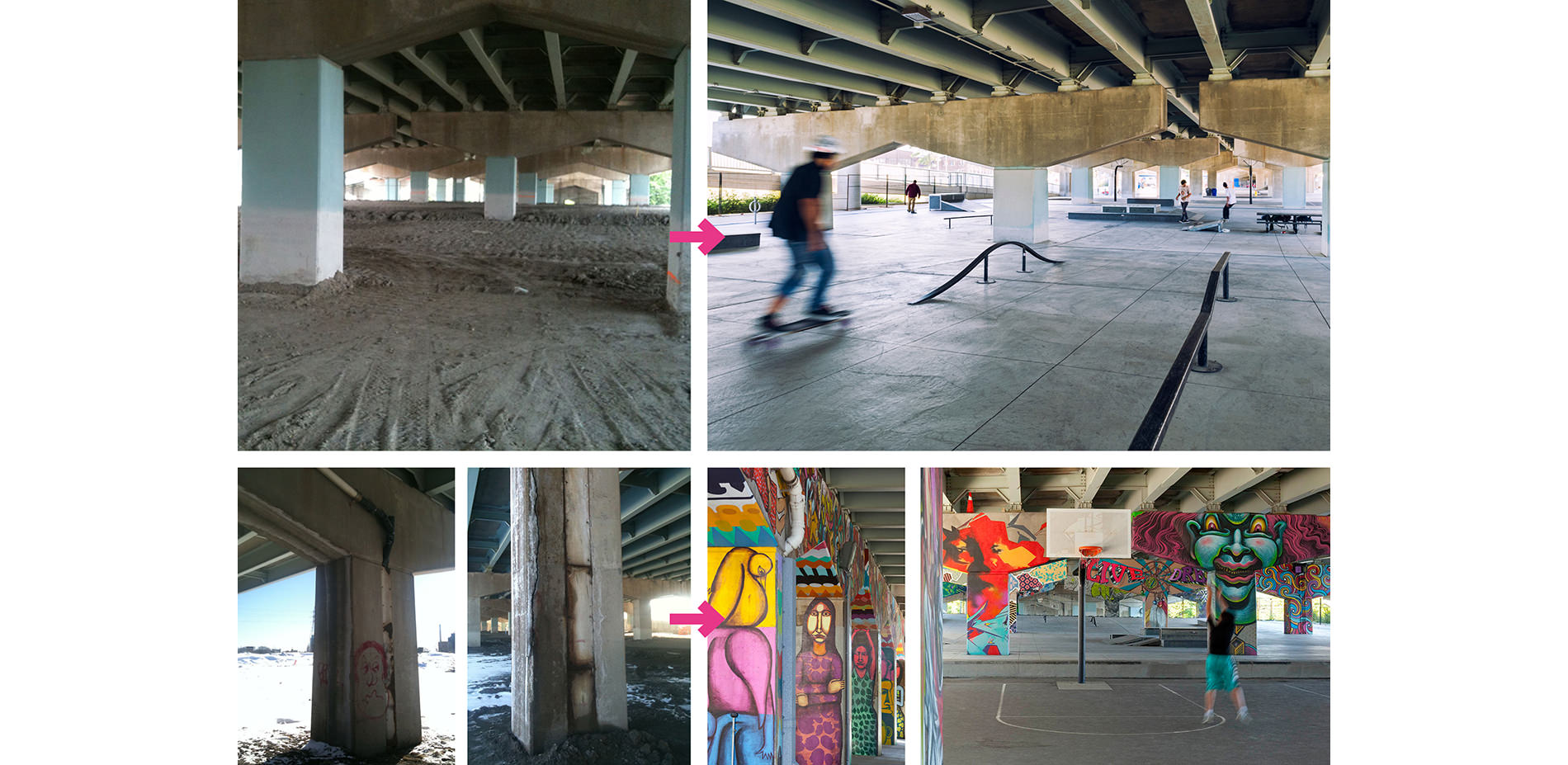
The existing archways are uplit in bright, imaginative colours and the previously neglected columns are used to define activity rooms for recreational amenities while providing opportunities for artistic expression. Left: Before condition. Right: Block 19+20 after completion.
Photo Credit: Left-side images (before development): PFS Studio, top-right: Doublespace Photography, bottom-middle and bottom-right: Tom Arban
Media: Please submit high-resolution image requests to images@asla.org.

Multi-functional ribbon like walls and benches were added to help define activity zones, provide seating and to direct movement throughout the site.
Photo Credit: All sketches: PFS Studio, all photos: Tom Arban
Media: Please submit high-resolution image requests to images@asla.org.
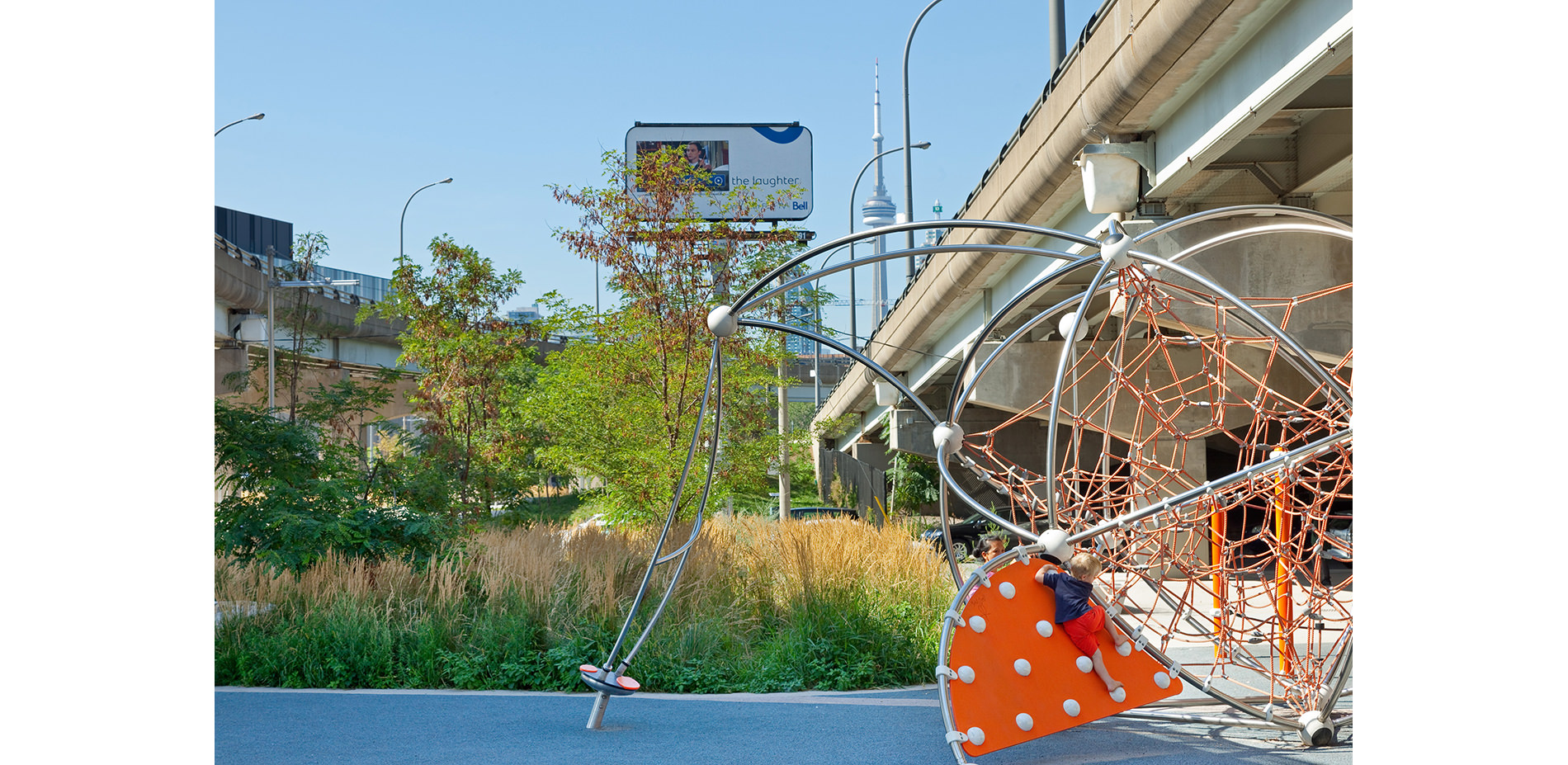
A layer of fanciful children’s play elements are speckled throughout the park in close proximity to sunlight and green spaces and contribute to the transformation of the park through color, form, and program.
Photo Credit: Tom Arban
Media: Please submit high-resolution image requests to images@asla.org.

The existing space was dark and deep. One design challenge was in understanding how light and shadow, green and grey, active and passive could coexist under and beside this massive piece of transportation infrastructure.
Photo Credit: Tom Arban
Media: Please submit high-resolution image requests to images@asla.org.
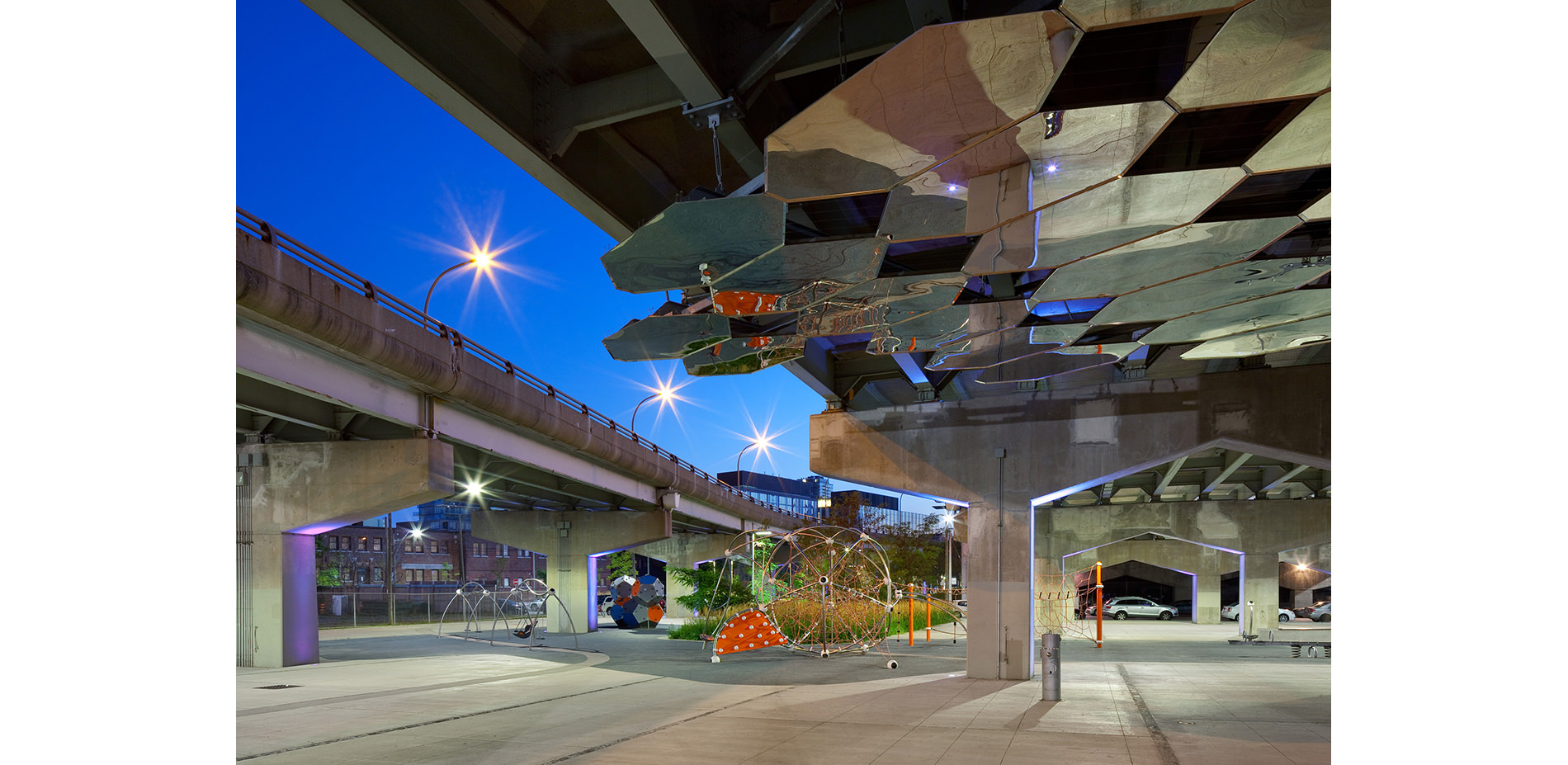
Compositionally, careful consideration was given to the vertical limitations of the space, particularly when juxtaposed with sliced openings to the sky. The mirrored art work lightens the ceiling and contributes to the interplay of reflected light throughout Block 19.
Photo Credit: Tom Arban
Media: Please submit high-resolution image requests to images@asla.org.

Bringing nature into the city within this particularly rough environment was a key measure of the success of the project and the close relationship between grey and green amplified this aspect of the park.
Photo Credit: Tom Arban
Media: Please submit high-resolution image requests to images@asla.org.
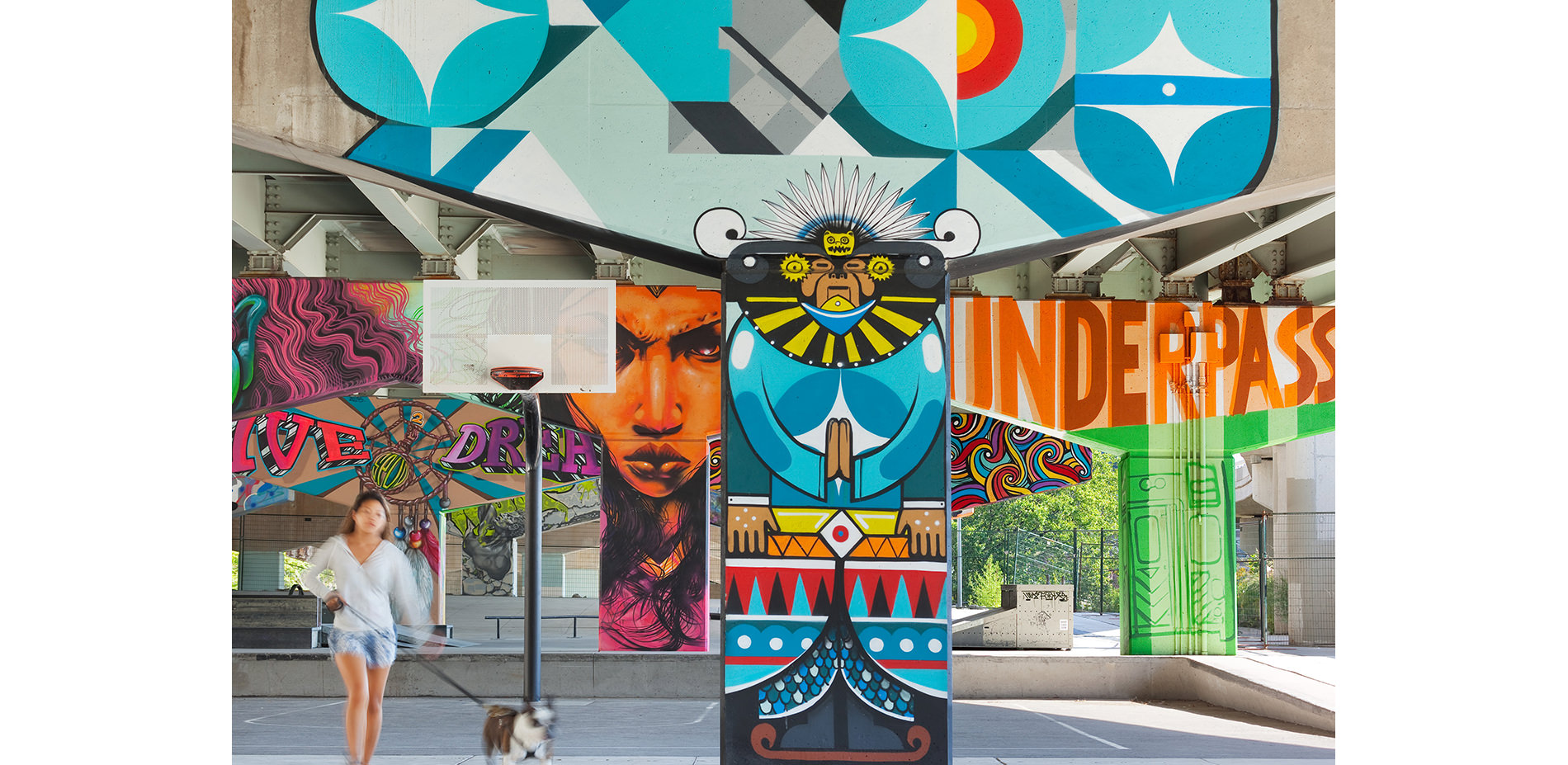
A pre-sanctioned graffiti event (StreetARToronto) transformed the space and became a catalyst for a number of following events throughout the year. Other sanctioned and unsanctioned but welcomed graffiti has continued to layer itself onto the overpass structures ever since.
Photo Credit: Tom Arban
Media: Please submit high-resolution image requests to images@asla.org.

A wide variety of both anticipated and unanticipated recreational programs have begun to take hold in Underpass Park, often due to the park’s unique offering of “free for the taking” weather protection.
Photo Credit: Natta Summersky
Media: Please submit high-resolution image requests to images@asla.org.
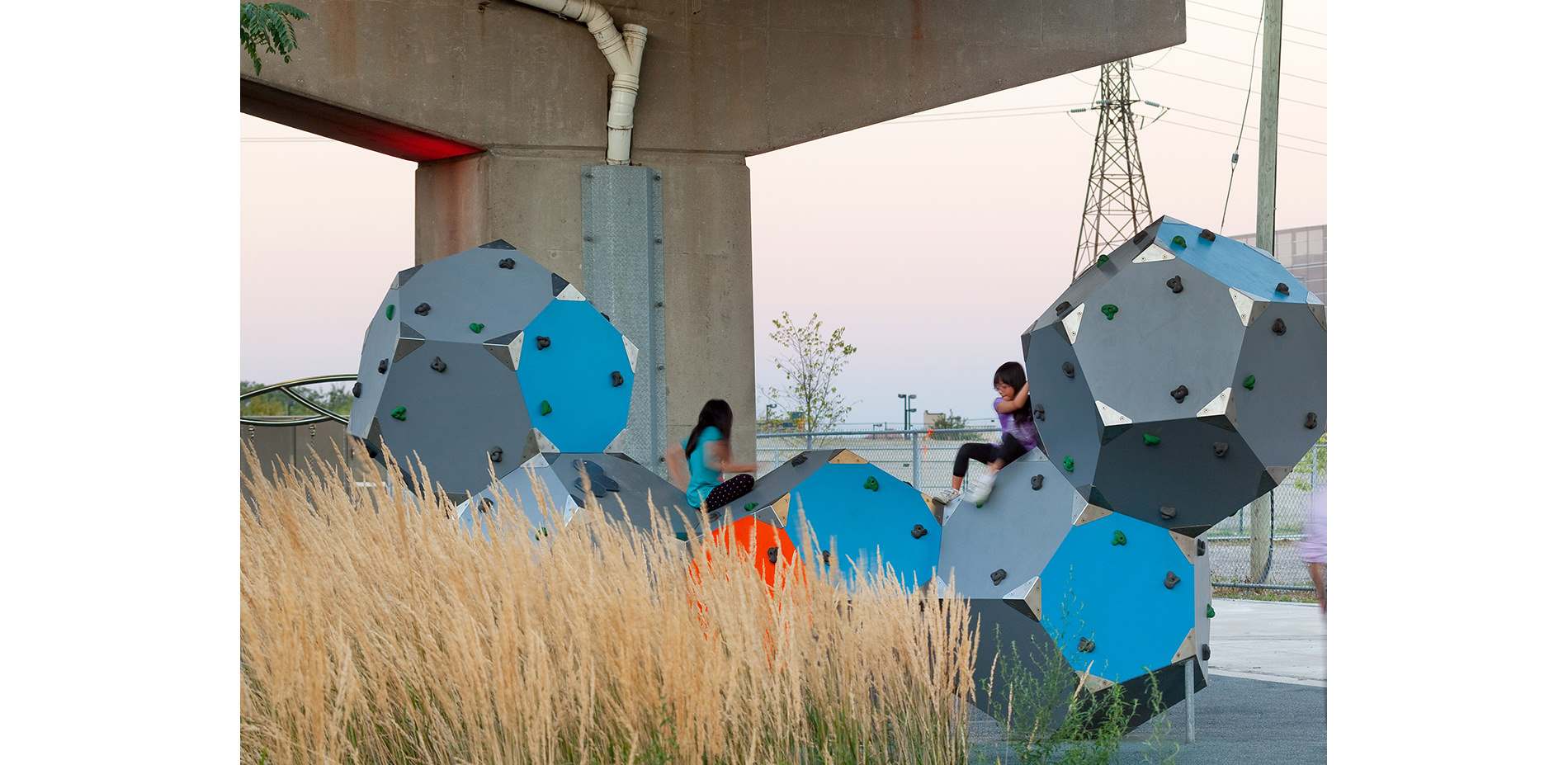
Even in the middle of an urban nowhere, kids have a way of finding adventure and fun.
Photo Credit: Tom Arban
Media: Please submit high-resolution image requests to images@asla.org.


















